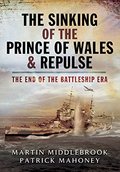The Winning Edge
Naval Technology in Action, 1939-1945
Poolman, Kenneth
1997, United States Naval Inst.
ISBN 1557506876
Hardcover, 240 pages
| Type. | General History |
| Pros. | covers a lot of ground |
| Cons. | poor organization and many factual errors |
| Rating. |  |
 This book is meant to cover naval technology in World War II for the layman. While in broad terms it does meet its aim, providing an overview of a variety of technologies, two major problems limit the usefulness of this book for the serious reader. One is that it is poorly organized; the other is the number of factual errors it contains.
This book is meant to cover naval technology in World War II for the layman. While in broad terms it does meet its aim, providing an overview of a variety of technologies, two major problems limit the usefulness of this book for the serious reader. One is that it is poorly organized; the other is the number of factual errors it contains.
Although the introduction states the author's aim ("to describe in lay terms the development of the most important of the weapons that dominated naval warfare from 1939 to 1945, and their employment in action"), the book still gives the impression of a general lack of purpose. After a good start, which covers secret naval development after World War I, radar, sonar, and the aircraft carrier, the book turns to specific World War II actions, and this is where the threads seem to unravel rather than knitting together. Chapters follow one upon the other in roughly chronological order, first detailing events in the western hemisphere, then moving to the Pacific war - so far, so good. However, these chapters suffer from structural deficiencies, namely in most cases a lack of introduction and conclusion, which coupled with titles that are "cute" rather than informative, confuse the reader as to what they are actually supposed to be focusing on. Too often I finished a chapter and asked myself, "What did I just read about, and what point was the author trying to make by writing it?"
Most chapters also lack any means to ease transition to the next chapter, which is invariably on a completely different topic and often in a completely different theater of war. Therefore, many chapters seem to end abruptly, in mid-thought. Even something as simple as beginning the next chapter with "Meanwhile, one thousand miles away, things were looking quite different" would have been helpful, but rarely was any kind of transition employed. By the same token, there is also little in the way of synthesis of ideas, or comparison of one technological innovation with another, or of later periods with earlier periods of the war. It almost seems as if the author started off with the intention of producing an encyclopedia of technologies, then rearranged the entries chronologically, expanded them into chapter length, and hoped this would represent a narrative.
The other major flaw, as mentioned above, is a host of small but annoying errors in the sections mentioning U-boats. (It is quite possible that this problem extends to other sections as well; but due to a certain bias on the part of the reviewer, only the U-boat data were scrutinized closely.) These errors include wrong spellings of German terms and of commander names (e.g., Fauenheim used consistently instead of Frauenheim, making it rather a challenge to find him in the index; Gunther everywhere instead of Günther), and wrong first names for commanders (Otto Schulz instead of Georg-Wilhelm Schulz of U-64; Gunther Endrass instead of Engelbert Endrass); as well as errors of dates, numbers of ships sunk, convoy designations, etc. This kind of silly, easy-to-detect error does not make a good impression on the reader.
All in all, this is not a very worthwhile book. Its poor organization makes it ill-suited as a reference tool, and the incorrect data lower its credibility. There are certainly many better general histories of the war at sea which cover technological developments with a lay audience in mind.
Review written by Tonya Allen.
Published on 27 May 2000.
Purchase information: (info) Get The Winning Edge now at amazon.co.uk (£ 29.50)
Get The Winning Edge now at amazon.co.uk (£ 29.50)
Return to our main review page.



